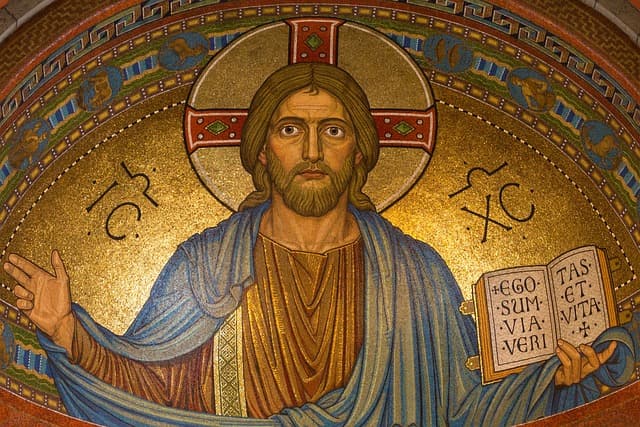In the intricate tapestry of human societies, the relationship between cultural beliefs and religious beliefs is a fundamental thread that has woven itself through the course of history. This article delves into the intriguing interplay between these two facets of human existence, as well as the role of cultural evolution in shaping religious ideologies and vice versa.
The Relationship Between Cultural Beliefs and Religious Beliefs
The relationship between cultural beliefs and religious beliefs is intricate and often intertwined. Culture and religion both play significant roles in shaping the values, norms, and practices of societies. Cultural beliefs encompass a wide range of shared assumptions, traditions, and behaviors that define a group’s identity and way of life. These cultural elements can heavily influence religious beliefs by providing a framework through which individuals interpret and practice their faith. At the same time, religious beliefs often contribute to the formation and evolution of cultural norms, reinforcing or challenging established customs. While they can complement each other, conflicts can also arise when cultural and religious beliefs diverge, leading to complex discussions about authenticity, adaptation, and preservation of traditions. Recognizing the interplay between these two spheres is crucial for understanding the dynamics that shape societies and individuals’ worldviews across the globe.
Cultural Evolutionary Theory of Religion
The Cultural Evolutionary Theory of Religion posits that religious beliefs and practices have evolved over time as a result of cultural processes. Drawing inspiration from Darwinian evolution, this theory suggests that religions, like biological organisms, undergo variations, selection, and transmission from one generation to the next. These variations can arise through factors such as cultural diffusion, adaptation to local environments, and the social dynamics of a given community. Just as natural selection favors traits that enhance an organism’s survival and reproduction, cultural selection can favor religious beliefs and practices that promote social cohesion, cooperation, and group identity. This theory highlights how religious ideas and rituals might have emerged as strategies for human societies to address common challenges, foster group unity, and transmit values across generations. However, it’s important to note that the Cultural Evolutionary Theory of Religion is one among various explanations for the origin and development of religious phenomena, and its validity continues to be a subject of scholarly debate and exploration.
The Role of Religious Beliefs in Shaping Culture
Religious beliefs hold a significant role in shaping culture. They often provide the moral framework upon which societies build their ethical codes and social norms. Religious rituals and practices become integral parts of cultural celebrations, influencing art, music, literature, and architecture. By inspiring a shared sense of purpose and community, religious beliefs contribute to the cohesion and identity of cultures.
The Meaning of Cultural Evolution
Cultural evolution refers to the gradual and dynamic transformation of human cultures over time. Similar to biological evolution, this concept suggests that cultural traits, ideas, practices, and norms change and develop through a process of variation, selection, and transmission. Cultural evolution encompasses a wide range of elements, including language, technology, art, social structures, and beliefs. It is driven by factors such as innovation, contact with other cultures, environmental changes, and shifts in social dynamics. Cultural evolution doesn’t necessarily imply progress in the same linear way that biological evolution might; rather, it involves adaptation to changing circumstances and the emergence of new patterns that shape societies. Understanding cultural evolution is essential for comprehending the complex interplay between tradition and change, as well as for analyzing how societies respond to challenges and opportunities on a global scale.
The Relationship Between Religion and Society
Religion and society share a reciprocal relationship. Societies often shape religious beliefs through their cultural norms, values, and historical experiences. Simultaneously, religious beliefs influence societal structures, hierarchies, and interactions. Religion can provide a sense of belonging, foster social cohesion, and guide ethical decisions, thus playing an essential role in the fabric of society.
How Religion Shapes Society
Religion plays a profound and multifaceted role in shaping societies around the world. As a fundamental aspect of human culture, it influences various dimensions of social life. One of the primary ways religion shapes society is through its role in establishing shared values, morals, and ethical frameworks. Religious beliefs often provide guidelines for individual behavior and interactions, fostering a sense of right and wrong that contributes to social cohesion. Moreover, religion often serves as a source of identity and belonging, creating a sense of community and solidarity among its adherents. Religious institutions can also be powerful agents of social change, advocating for justice, equality, and humanitarian efforts. Conversely, religion has been known to perpetuate divisions and conflicts, sometimes exacerbating societal tensions. It can influence political structures and decision-making, impacting governance and laws. Overall, the relationship between religion and society is intricate, influencing everything from cultural practices to political landscapes, and reflecting the complex interplay between deeply held beliefs and the structures that define human communities.
An Example of Cultural Evolution
One notable example of cultural evolution is the development and widespread adoption of writing systems. In ancient human societies, communication was primarily oral, limiting the transmission of knowledge and information across generations and distances. Over time, the need to record and convey more complex ideas led to the innovation of writing. The earliest writing systems, such as cuneiform in Mesopotamia and hieroglyphs in Egypt, started as pictorial representations of objects and concepts. These early forms gradually evolved into more abstract symbols, enabling the recording of not only concrete objects but also abstract thoughts and narratives. As writing systems became more sophisticated, they allowed for the preservation of history, legal codes, religious texts, literature, and scientific discoveries. This transformative development not only revolutionized how knowledge was stored and shared but also facilitated the growth of advanced civilizations, the exchange of ideas across cultures, and the emergence of complex societies that depended on written records for administration and communication. This example underscores how cultural evolution can lead to significant advancements that shape the trajectory of human progress.
Conclusion
The dynamic interplay between cultural beliefs and religious beliefs is a testament to the intricate relationship that defines human societies. Cultural evolution serves as a dynamic force that shapes religious ideologies, and religious beliefs, in turn, influence the development of culture. This reciprocal relationship underscores the profound impact that faith and culture have on one another, guiding societies through the currents of history and human experience.

